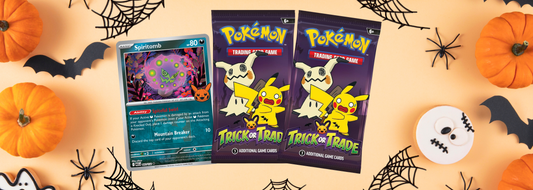
Card Grading Checklist: Should You Grade That Card?
Building a collection is easy. Deciding whether to grade that one perfect pull is where things get tricky. Between grading fees, shipping risks, and the anxiety of waiting months for a result, it’s natural to wonder: is it actually worth it?
This guide breaks down everything you need to know before sending a card off to PSA, Beckett, or CGC, including:
- What card grading actually is
- The real pros and cons of getting your cards slabbed
- A detailed checklist to help you decide if your card deserves the upgrade
Let’s start with the basics: what card grading means and why collectors chase those coveted 10s in the first place.
What is Card Grading?
Card grading means sending your collectible to a third-party company like PSA, Beckett, or CGC that specializes in authentication and condition assessment. They verify that your card is legit, assign it a numerical grade (typically 1 through 10), and seal it inside a tamper-proof plastic slab that’ll outlive your next three decks.
What’s the Purpose of Card Grading?
So why do collectors do this? Because that little number on the slab can make or break a card’s market value. A PSA 10 Charizard isn’t just worth more than a raw Charizard… it’s in another galaxy entirely. Grading creates an objective standard that buyers trust, giving your card street cred (or binder cred, if you prefer).
But there’s a catch: it isn’t free. Grading costs can range from $20 to $100+ per card, depending on the service tier and turnaround time. Add in shipping, insurance, and the emotional toll of waiting three months for a verdict, and you start to see why not every card deserves the honor.
At its best, card grading does three things:
- Confirms authenticity (no more wondering if that Black Lotus is real).
- Protects your investment (the slab shields it from fingerprints, humidity, and your friend who “just wants to see it real quick”).
- Turns nostalgia into numbers — hard data you can sell, trade, or brag about.
Whether you’re chasing pristine gem mints or just want to preserve your favorite pulls from your first booster box, understanding what grading actually means is the first step in deciding whether it’s worth doing.
The Case For and Against Card Grading
Grading isn’t always a win. It costs money, takes time, and the result isn’t guaranteed. A “Near Mint” card in your eyes might come back as an 8 and tank its potential profit.
Cons include:
- Grading fees that outweigh market gains
- Long turnaround times or shipping risk
- Subjective results and potential disappointment
Why You Might Want to Grade Anyway
Though it’s not without risk, card grading can give your collection instant credibility. A third-party grade confirms authenticity, protects your card in a sealed case, and makes resale far easier.
For rare, high-demand cards, a high grade can multiply the value several times over.
Pros include:
- Verified authenticity and condition
- Better protection and long-term preservation
- Higher resale value and buyer trust
Bottom line: grading can elevate your cards, but may also just drain your wallet. The checklist below will help you determine if it’s actually worth it.
The Card Grading Checklist
Not every card deserves the VIP grading treatment. Before you shell out for fees and shipping, run through this checklist to see if your card is truly worth the slab.
1. Check the Card’s Market Value
Look up recently sold listings (not asking prices) on eBay, TCGplayer, or auction sites. Compare what your card sells for raw versus graded.
If the bump in price won’t cover the grading fee, shipping, and wait time, you’ve already got your answer: keep it sleeved and safe.
2. Inspect for Flaws
Hold the card under a bright light or use a magnifier.
Check:
- Corners: whitening, bends, or fraying
- Edges: chipping or discoloration
- Surface: print lines, scratches, fingerprints
- Centering: borders should look even
Even one visible flaw can drop your grade from gem mint to “ouch.”
3. Consider Rarity and Demand
Not all cards deserve the slab treatment. A first-edition holo, short-print rookie, or serial-numbered parallel? Absolutely.
A mass-printed base card from last year’s set? Probably not. Rarity and popularity drive value more than shine.
4. Estimate the Likely Grade
Be brutally honest. Most collectors overrate their cards. Compare yours to online examples of PSA or BGS 8s, 9s, and 10s.
If you can spot multiple imperfections with the naked eye, it’s not a 10. Maybe not even a 9.
5. Check Market Timing
Timing matters. Grading a hot card right after a player’s breakout or a set’s release can pay off.
But grading during hype peaks can also backfire if prices crash before your card returns. Consider whether the card’s value is rising, stable, or fading.
6. Weigh the Costs and Wait Times
Factor in:
- Grading tier fees ($20–$100+)
- Shipping, insurance, and packaging
- Months-long turnaround times
If the math doesn’t work, save your cash for booster boxes (or Goat Armor sleeves).
7. Pick the Right Grading Company
Each grader has its niche:
- PSA: Highest resale value and recognition
- Beckett: Detailed subgrades, tougher grading scale
- CGC: Fast, consistent, and popular with TCG collectors
Match the company to your card type and goals.
8. Decide Your Endgame
Ask yourself: Am I grading to sell or to preserve?
If it’s for profit, think ROI. If it’s sentimental, the peace of mind might be worth more than resale value.
Protect Your Cards Before You Grade With Goat Armor
Card grading can authenticate, protect, and elevate your collection, but it’s not a decision to rush. The right cards, timing, and conditions can turn grading into a powerful investment; the wrong ones can leave you with an expensive lesson in wishful thinking.
Whether you’re preparing a future PSA 10 or keeping your favorite pulls pristine in the meantime, Goat Armor’s sleeves, binders, and top-loaders give your cards the protection they deserve with no slab required.






